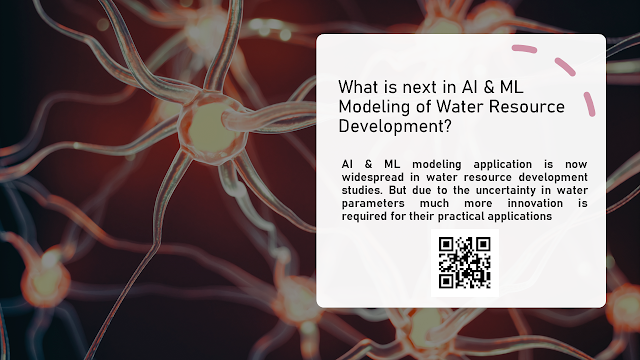In recent years like all the other fields of studies, the application of Artificial Intelligence and Machine Learning (AI&ML) on water resource development projects has increased manifold.
For example :
Sukanya, S., and Sabu Joseph. "Climate change impacts on water resources: An overview." Visualization Techniques for Climate Change with Machine Learning and Artificial Intelligence (2023): 55-76.
Kommadi, Bhagvan. "AI and ML Applications: 5G and 6G." (2023).
Joseph, Kiran, Ashok K. Sharma, Rudi van Staden, P. L. P. Wasantha, Jason Cotton, and Sharna Small. "Application of Software and Hardware-Based Technologies in Leaks and Burst Detection in Water Pipe Networks: A Literature Review." Water 15, no. 11 (2023): 2046.
Yurtsever, Mustafa, and E. M. E. Ç. Murat. "Potable Water Quality Prediction Using Artificial Intelligence and Machine Learning Algorithms for Better Sustainability." Ege Academic Review 23, no. 2 (2023): 265-278.
However, the uncertainty involved in Hydrologic/Hydraulic or Water Quality Parameters is very hard to simulate, and even with the advent of such cognitive algorithms accuracy and reliability of the models nevertheless lack substance. In this field of study, there is still much to be done. Some interesting objectives can be :
Click here to see the five interesting objectives in HydroGeek Newsletter.
You may also browse the following :
Very Short-Term Courses: How to use Surfer in Water Resources DevelopmentBe Sustainable: How to Use WCI and ECI to save water and electricity use?
Create your own Video and manage it.
Become an Affiliate of other related books, courses, and products
Guest Posting to this newsletter
New but peer-reviewed journals
Become a Reviewer: Contact EIS
Learn about data science with simple examples
Evaluate the suitability of a journal with respect to your article
Host your own App
Read the book: Lecture Notes on MCDM
Preorder: GIS in One Page
Preorder: 50 Project Ideas on MCDM and GIS
For website owners

